Discover 15 hidden attractions, cool sights, and unusual things to do in Spoleto (Italy). Don't miss out on these must-see attractions: Spoleto Cathedral, Villa Pianciani, and Basilica of San Salvatore. Also, be sure to include San Pietro extra moenia in your itinerary.
Below, you can find the list of the most amazing places you should visit in Spoleto (Umbria).
Table of Contents
Spoleto Cathedral
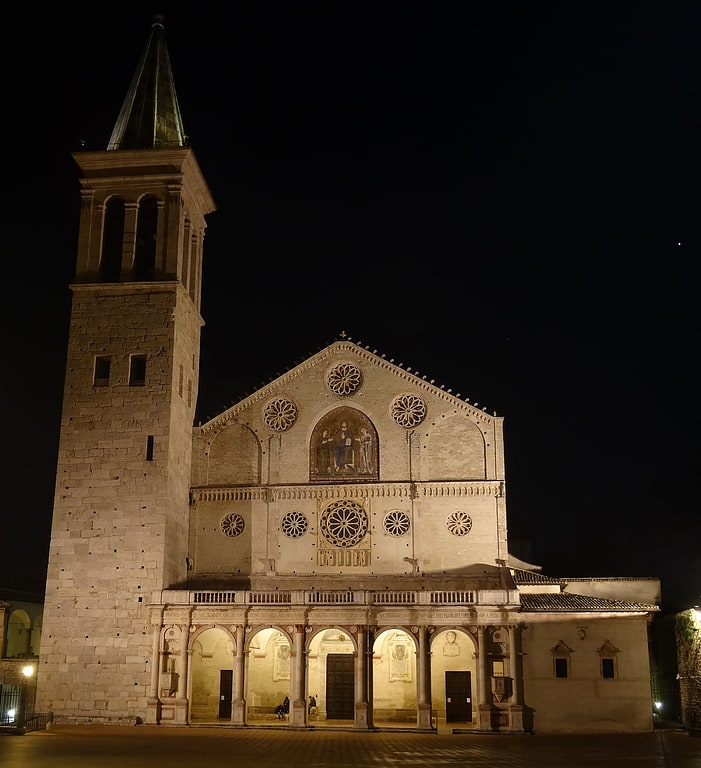
Also known as: Duomo di Spoleto
Cathedral in Spoleto, Italy. Spoleto Cathedral is the cathedral of the Archdiocese of Spoleto-Norcia created in 1821, previously that of the diocese of Spoleto, and the principal church of the Umbrian city of Spoleto, in Italy. It is dedicated to the Assumption of the Blessed Virgin Mary.
The church is essentially an example of Romanesque architecture, with a nave and two side-aisles crossed by a transept, although subsequently modified. It was built from the second half of the twelfth century after the city had been devastated by Frederick Barbarossa's troops, over an area where there had previously stood an earlier cathedral, dedicated to Saint Primianus (San Primiano) and destroyed by the emperor. A notable external porch and the belfry were added in the fifteenth and sixteenth century respectively.
The façade is divided into three bands. The lower one has a fine architraved door with sculpted door-posts. Two pulpits are provided on each side of the porch. The upper bands are separated by rose windows and ogival arches. The most striking feature of the upper façade is the Byzantine-hieratic mosaic portraying Christ giving a Benediction, signed by one Solsternus (1207). He signed his work with the inscription "Doctor Solsternus, hac summus in arte modernus" (doctor Solsternus, supremely modern in his art), calling himself an outstanding modern artist. Nothing else is known about him. He was certainly ahead of his contemporaries, because it would take half a century before the mosaics in Roman churches would surpass his style. The part of the belfry contemporary with the church reuses Roman and early medieval elements.
The interior was significantly modified in the 17th–18th centuries, though it has kept the original Cosmatesque floor of the central nave remains. Another survival is the frescoed apse with four Scenes from the Life of the Virgin Mary, begun in 1467 by Filippo Lippi and completed two years later by his pupils Fra' Diamante and Piermatteo Lauro de' Manfredi da Amelia. Lippi is buried in the south arm of the transept.
Also noteworthy are the altar cross by Alberto Sozio, dated 1187, a Byzantine icon donated to the city by Barbarossa as a sign of peace and the frescoes by Pinturicchio in the Chapel of the Bishop of Eroli. Other frescoes from the 16th century are in the next chapel. The church also contains a polychrome wood statue of the Madonna (14th century) and a choir (16th century) with painted altar and tabernacle, in the Chapel of the Relics, under which lies the crypt of the former cathedral of San Primiano.[1]
Address: Piazza del Duomo, 7, 06049 Spoleto
Villa Pianciani
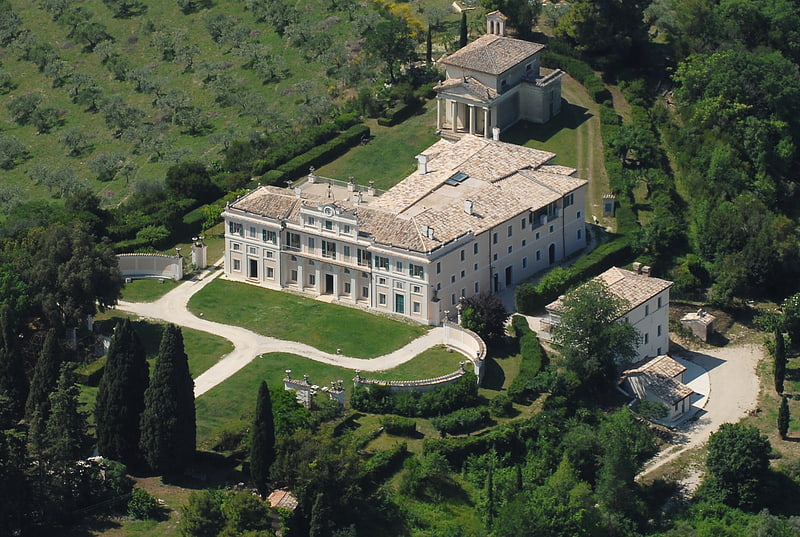
Villa Pianciani is a complex situated on top of a hill that dominates the Spoleto Valley in Umbria. The complex is the work of architect Giuseppe Valadier and comprises different buildings and a vast historical park. It is one of the most elegant examples of the late 18th century architecture of the region.[2]
Address: Terraia, Spoleto
Basilica of San Salvatore
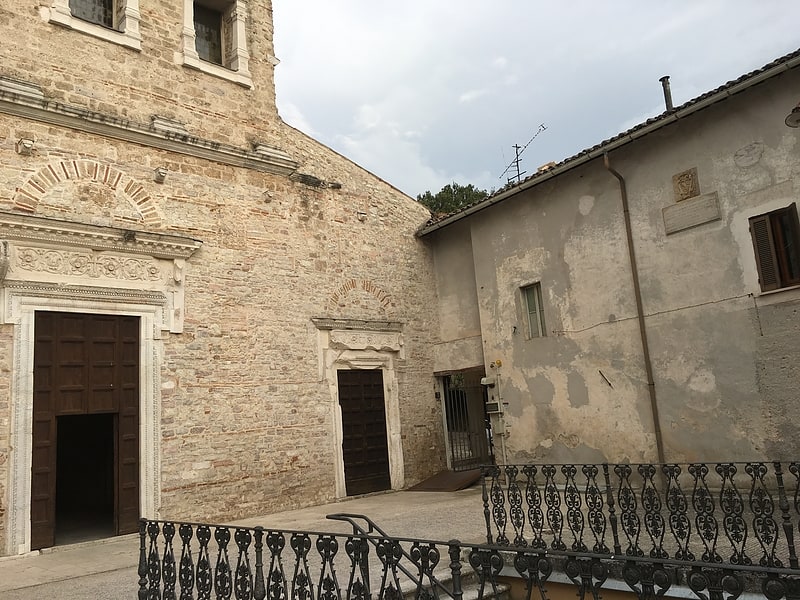
Also known as: Chiesa di San Salvatore
Catholic church in Italy. San Salvatore is a romanesque-style, former basilica church located in the center of Spoleto, Province of Perugia, region of Umbria, Italy.
The Lombards’ renovation of the church dates back to the eighth century and it is testimony to the architectural style of the Longobardia Minor, “marking the transition from Antiquity to the European Middle Ages”.
In 2011 was declared a UNESCO world heritage property as part of the series of sites known as “Longobards in Italy. Places of the power (568-774 A.C.)”, which comprises seven sites throughout Italy characterized by lombard elements of architecture, painting, sculpture and art. Beside the nearby Clitunno Tempietto (PG), the other five sites are: the castrum with the Torba Tower and the church outside the walls Santa Maria foris portas (VA), the monumental area with the monastic complex of San Salvatore-Santa Giulia (BS), the Gastaldaga area and the Episcopal complex (UD), the Santa Sofia complex (BN) and the Sanctuary of San Michele (FG). San Salvatore is located in the monumental cemetery of Spoleto, upon Ciciano hill, outside the medieval town walls. The cemetery was designed in 1836 by the architect Ireneo Aleandri.[3]
Address: Via della Basilica San Salvatore, 2, 06049 Spoleto
San Pietro extra moenia

Also known as: Chiesa di San Pietro
San Pietro extra moenia is an ancient Roman Catholic church in Spoleto, Umbria, Italy. Remarkable examples of Romanesque sculpture adorn the facade. The term extra moenia refers to its location outside the city walls.
The site was once an ancient cemetery, but a church dedicated to St Peter existed by the 5th-century, to house the chains that supposedly once bound the saint. The present structure was built between the 12th and 13th centuries. The facade is floridly decorated with ornamental figures, animals, and reliefs. Some of the scenes related events in the life of the saint, while others are moral tales, for example, a deer battling a snake.[4]
Address: Via Giro del Ponte 4, 06049 Spoleto
Basilica of Sant'Eufemia

Also known as: Chiesa di Sant'Eufemia
Sant'Eufemia is a romanesque-style, Roman Catholic basilica church in the town of Spoleto, in the province of Perugia, region of Umbria, Italy. The church is dedicated to Saint Euphemia of Chalcedon.[5]
Address: Via Aurelio Saffi, 13, 06049 Spoleto
Santa Maria della Manna d'Oro
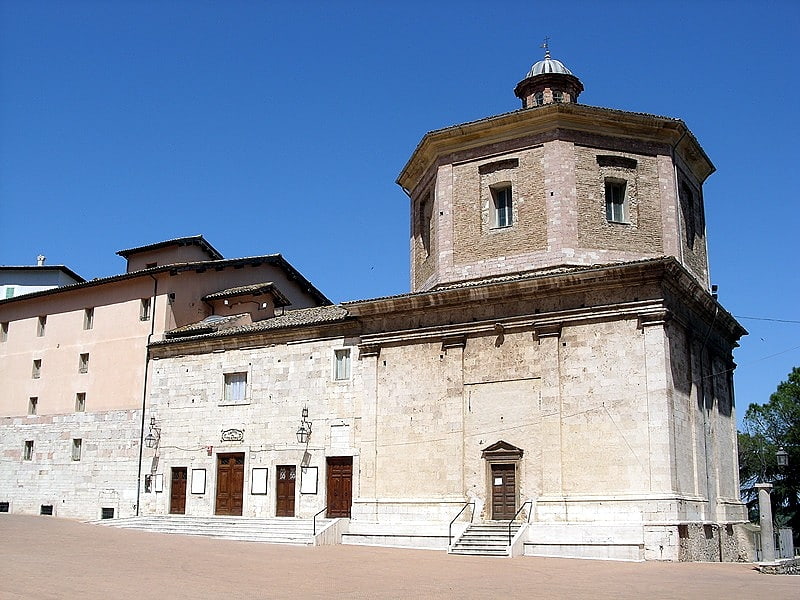
Santa Maria della Manna d'Oro is a renaissance-style, former sanctuary-church located in the center of Spoleto, Province of Perugia, region of Umbria, Italy. The church faces the piazza del Duomo.
A sanctuary dedicated to the Vergine della Misericordia existed at the site, but because it was dilapidated and because the city had escaped sacking by the Imperial troops in 1527, the merchants in the commune decided to refurbish the church. It is also said that Spoleto merchants profited from trading with the imperial forces, hence the surname manna of gold. It was built with an octagonal dome above a plain square base, and the interior space reflects the octagonal layout.
Construction began in 1527, but was not complete until the early 17th century. The interior is now used for exhibition space and houses an elaborate baptismal font originally from the Cathedral, and some canvases by Sebastiano Conca. AA.VV.[6]
Address: Piazza del Duomo, Spoleto
San Ponziano
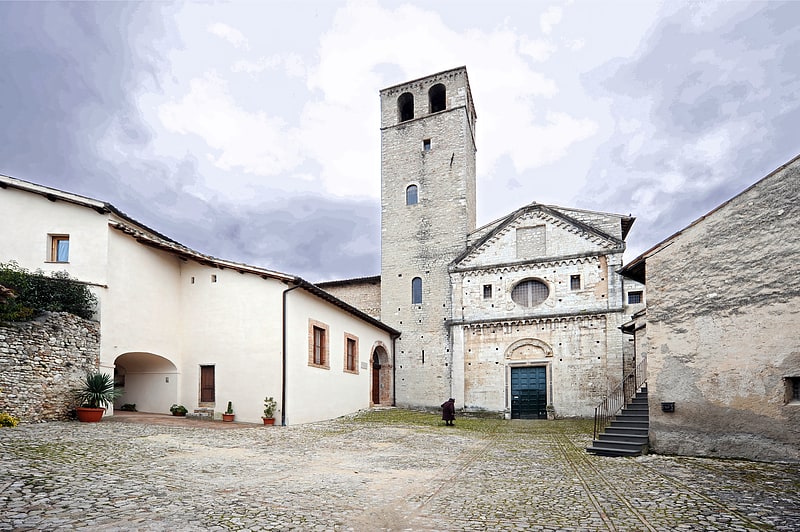
Monastery in Spoleto, Italy. San Ponziano is a romanesque-style, Former-Benedictine monastery and church located in Spoleto, Province of Perugia, region of Umbria, Italy. The site is dedicated to St. Ponziano, the patron saint of Spoleto.[7]
Address: Via S. Salvatore Basilica, 2, 06049 Spoleto
Teatro Caio Melisso
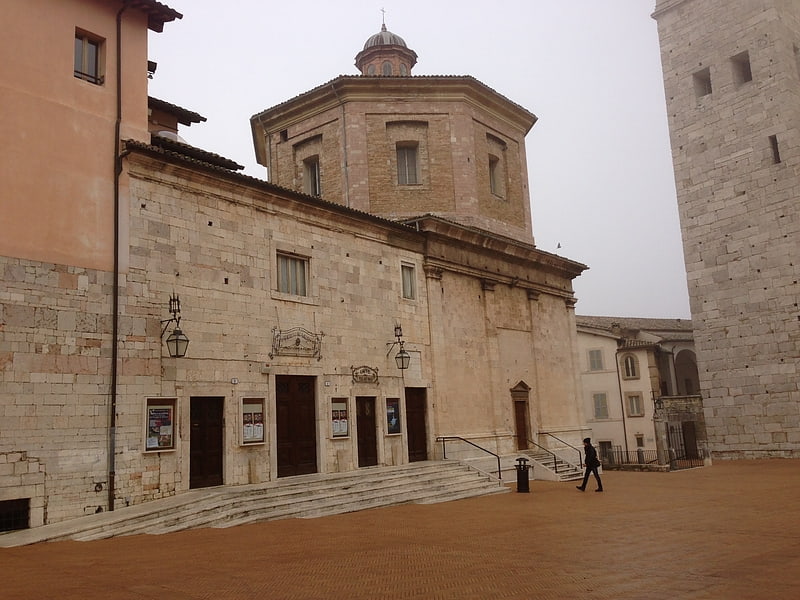
Opera house. The Teatro Caio Melisso is an opera house located in Spoleto, Italy and it serves as the main venue for opera performances during the annual summer Festival dei Due Mondi.
The theatre has undergone several transformations and name changes since the late 17th century. The Teatro di Piazza del Duomo, also known as the Teatro della Rosa, built around 1667 was modernized in 1749 and re-opened in 1749 as the Nuovo Teatro di Spoleto. After an 1817 restoration and after Rossini had visited the theatre, it gradually fell into disuse and a new theatre was needed by the mid-19th century. The 800-seat Teatro Nuovo was built between 1854 and 1864 at considerable public expense.
However, and in spite of the Nuovo, the old theatre was preserved and renovated once more with a new design and layout. Now renamed the Teatro Caio Melisso after a Spoletan writer, it re-opened in 1880 as a 350-seat, 3 levels of boxes plus a gallery opera house.
The fact that two opera theatres existed brought Gian-Carlo Menotti, the Festival's founder and director, to the town since Menotti felt that Spoleto offered many attractions. The first festival was held in 1958. The Festival's inaugural presentation on 5 June 1958 was Verdi's Macbeth, but other less known and neglected operas characterized early Festivals. In addition to Menotti's own operas, most seasons reflect a broad range of periods and styles.[8]
Address: Piazza del Duomo, Spoleto
San Gregorio Maggiore
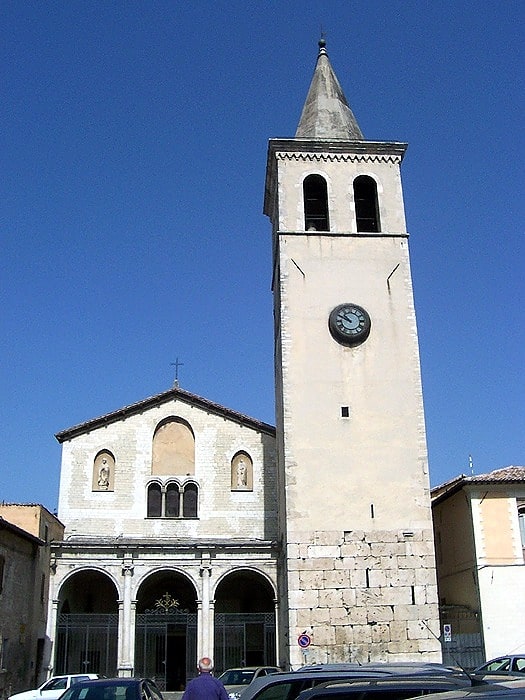
Catholic church in Spoleto, Italy. San Gregorio Magno is a Romanesque-style, Roman Catholic basilica church located in front of the piazza Garibaldi in the town of Spoleto, in the province of Perugia, region of Umbria, Italy.[9]
Address: Piazza Giuseppe Garibaldi, 34, 06049 Spoleto
Borgo Acquaiura

Hiking, Alpine hut
Address: Frazione Acquaiura, Spoleto
Museo della ferrovia Spoleto Norcia
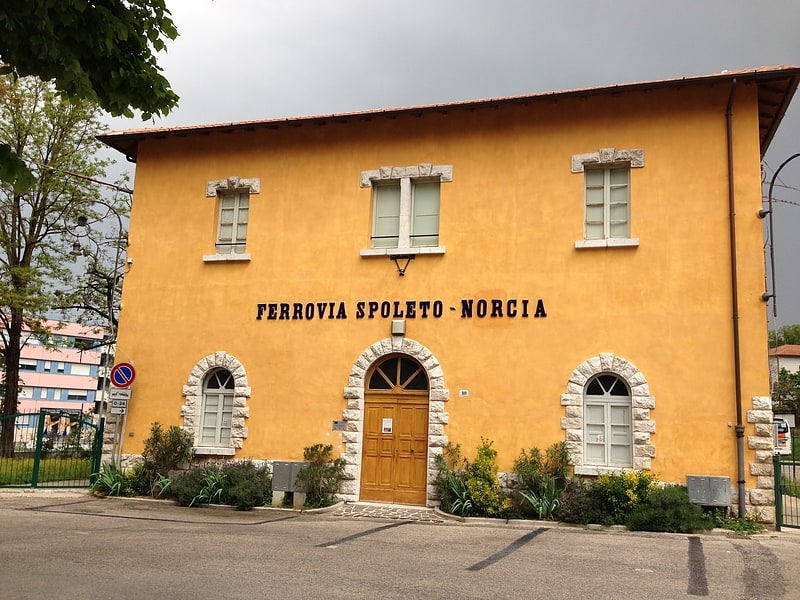
Spoleto Città station was a railway station located along the former Spoleto-Norcia narrow-gauge railway line, serving the municipality of Spoleto.
Address: Via Fratelli Cervi 10, 06049 Spoleto
National Archaeological Museum

Also known as: Museo Archeologico Nazionale
Museum, Specialty museum
Address: Via Sant'Agata 18/A, 06049 Spoleto
San Paolo inter vineas
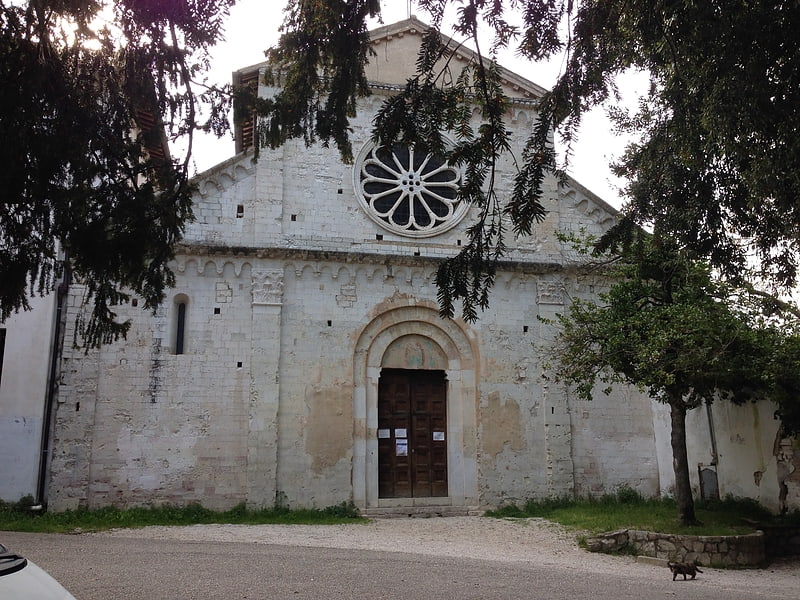
Also known as: Abbazia di San Paolo "inter vineas"
Building in Spoleto, Italy. San Paolo inter vineas is an ancient Roman Catholic church in Spoleto, Umbria, Italy. The term inter vineas refers to its location outside town, among the vineyards.
A church at the site was founded in the 6th century in time of Pope Gregory the Great, when legend holds that a miracle occurred when a heretical Arian Lombard bishop was struck blind while holding mass. The first document date buildings here by the 10th century, when the church was affiliated with a Benedictine order convent of nuns. The church was rebuilt in 1234, and consecrated by Pope Gregory IX. In the 14th century, the monastery was abandoned and relocated inside the city walls, next to the church of Sant'Agata. In 1771, the church was again reconstructed and the interior redone. In 1965, the reconstruction attempted to highlight original late-Romanesque style of the early 13th century. The facade recalls two other churches in Spoleto, San Pietro and San Ponziano, with a central rose window and a suggestion of the central nave and two aisles. The interior has frescoes from the 13th century.[10]
Address: Via San Paolo, Spoleto
Palazzo Collicola Arti visive
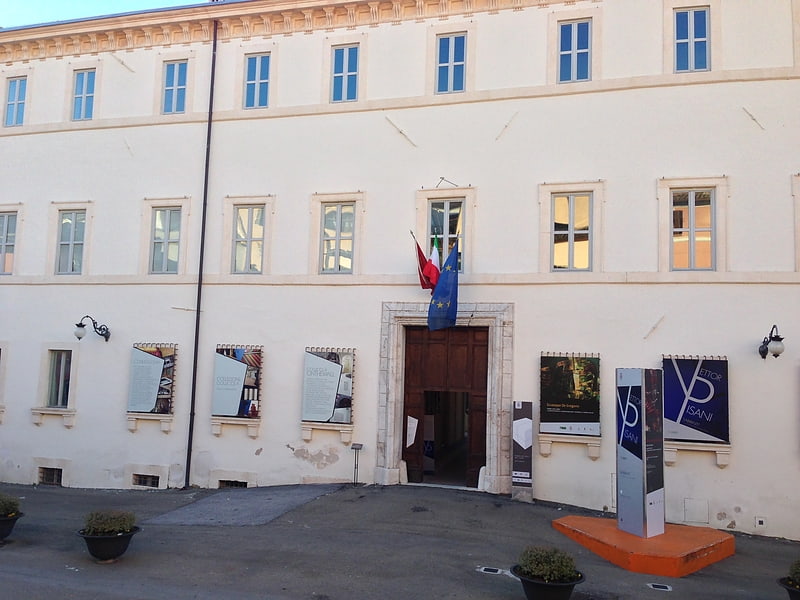
Palazzo Collicola is a museum named in memory of Giovanni Carandente located inside Palazzo Collicola, an 18th-century building that occupies the entire western side of the square of the same name in the historic center of Spoleto. Inaugurated in 2000, it was then refurbished in 2019. Together with the Burri Collection in Città di Castello, it is the most important contemporary art museum in Umbria. Before 2009 it was called the Galleria Civica d'Arte Moderna. After Gianluca Marziani, since 2019 the direction has passed into the hands of art critic and historian Marco Tonelli, who was Carandente's collaborator.
The museum has three floors: ground floor: 1,500 square meters of exhibition space hosting temporary exhibitions; second floor: entirely occupied by the noble apartment, it displays furniture and picture gallery coeval to the palace and houses the Carandente Library; second and top floor: here is the permanent collection of the Gallery of Modern Art
Address: Piazza Collicola 1, 06049 Spoleto
Casa Menotti
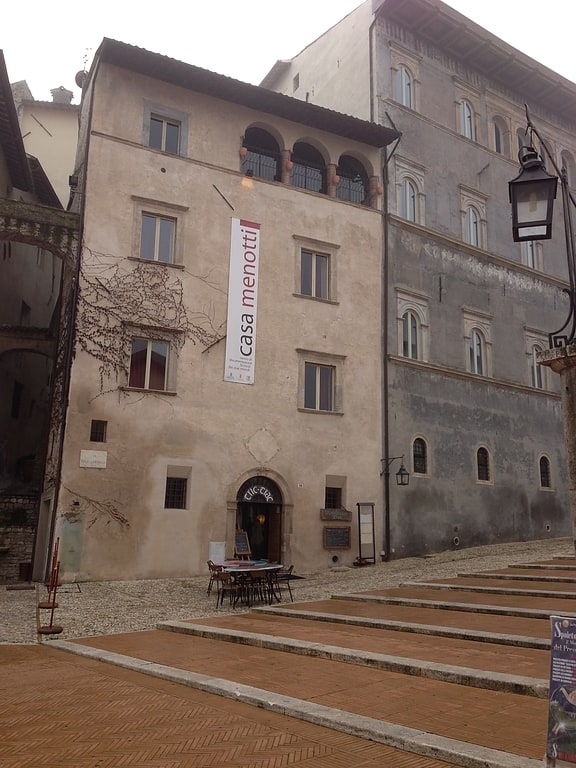
Casa Menotti, is a 16th-century palace in Spoleto, located in Piazza del Duomo.
It was the home of Giancarlo Menotti, composer, screenwriter and creator of the Festival dei Due Mondi, purchased in 2010, after his death, by the "Monini Foundation." Since June 2011 it has housed the Documentation Center of the Festival dei Due Mondi, a small museum of about 160 m² managed by the Monini Foundation in collaboration with the municipality of Spoleto and the Festival dei Due Mondi Foundation.
Address: Via dell_Arringo, 1, Spoleto